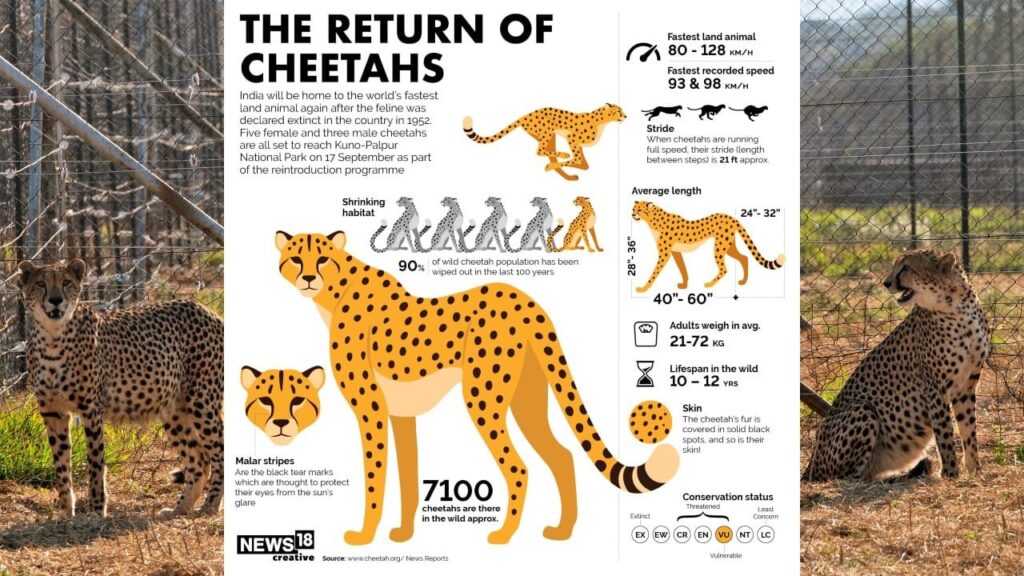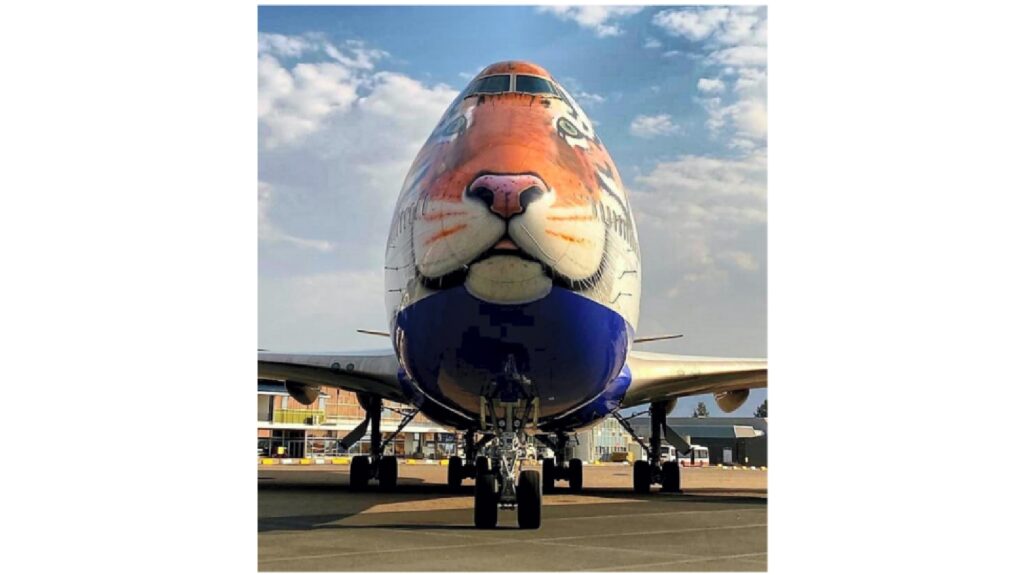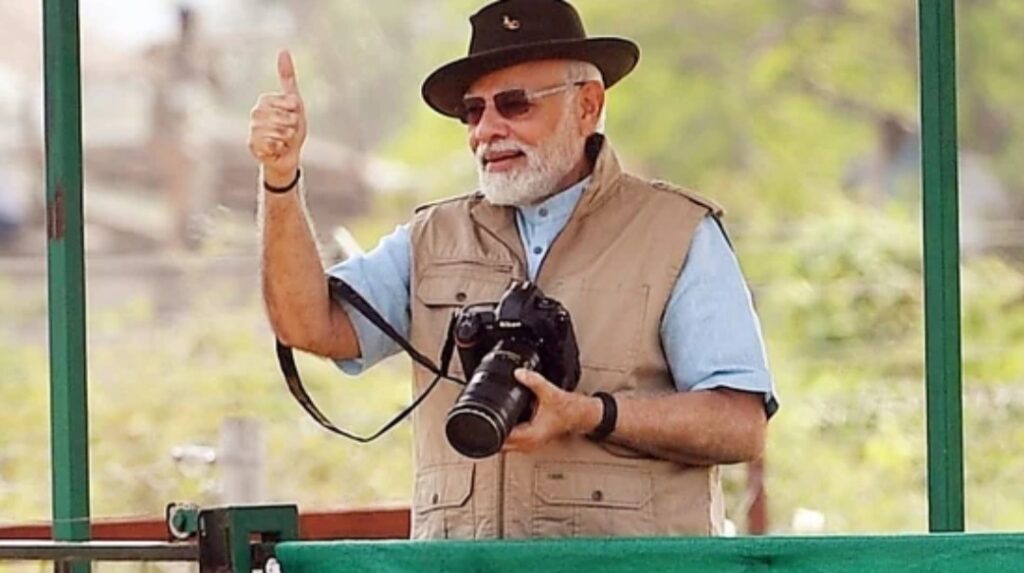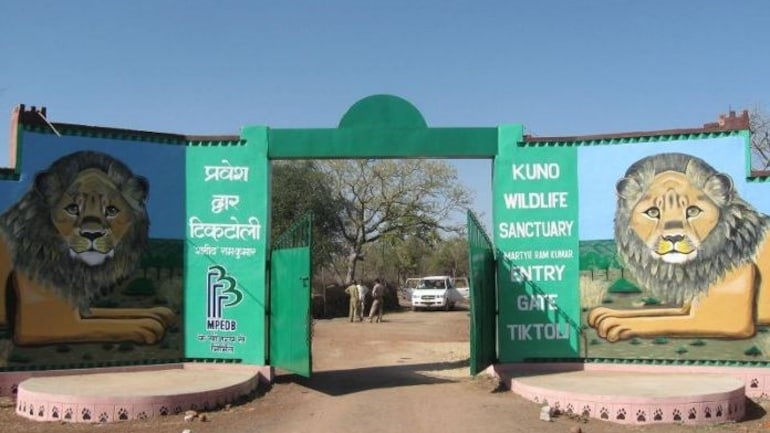The World Wildlife Fund estimates that just 7,100 cheetahs are surviving in the wild. According to the International Union for Conservation of Nature’s (IUCN) red list of endangered species, cheetahs are classified as vulnerable. Cheetahs are flagship grassland animals and are crucial to the preservation of other grassland species that are part of the predator food chain.
Indian rulers and princes used the Asiatic Cheetah, commonly referred to as the “hunting leopard,” to hunt blackbucks and gazelles. The Asiatic Cheetah was widespread and could be found throughout the Middle East, from the Arabian Peninsula to Iran, Afghanistan, and India, up to the 20th century. The species was on the verge of extinction in several locations by the turn of the twentieth century. The last three reported Asiatic Cheetahs were killed by gunfire by Maharaja Ramanuj Pratap Singh Deo of Koriya (current-day Chhattisgarh). In 1952, India proclaimed the cheetah extinct. There have been various efforts to reintroduce the wild cat in the Indian subcontinent since then.

In the 1970s, Indira Gandhi and the Department of Environment wrote to the Iranian government and requested to reintroduce them in India. Although they received a positive response, the negotiations came to a halt after an emergency was declared in India and the Shah of Iran was overthrown.
In the 1980s, Kenya made proposals for the introduction of African Cheetahs. Again in 2009, the Indian government proposed to bring African Cheetahs, however, the proposal was rejected by the Supreme Court.
Project Cheetah
Project Cheetah is an initiative launched by the Indian government to reintroduce cheetahs into the Indian woodlands. It is the world’s first intercontinental wild, large carnivore relocation project. The reintroduction of animals in a certain territory is not a rare phenomenon. Wilder Blean Bison Project, Isle of White Sea Eagles are a few examples of animal reintroduction projects. The notion was developed following the 2009 initiative by conservationists from India and the Namibia-based Cheetah Conservation Fund (CCF), a non-profit organization dedicated to saving and rehabilitating the big cat in the jungle.
In July 2020, India and the Republic of Namibia signed a Memorandum of Understanding (MoU) following more than 12 years of negotiations. According to the MoU, Namibia agreed to send 50 cheetahs to India over the course of five years, and for the time being, the Namibian government has given the go-ahead to donate the eight cats needed to kick off the programme.
At last-minute India declined to take 3 out of the 8 cheetahs, citing the fact that they were captive bred and might not be able to survive in the wild. The Namibian tourist minister reassured that the cheetahs were captured when they were young and had some hunting experience. The cheetah was scheduled to be reintroduced to the nation in Madhya Pradesh in November 2021, but the COVID-19 epidemic disrupted the plan.

The mission was finally carried out on Prime Minister Narendra Modi’s birthday, on 17th September 2022. Eight cheetahs were flown from Namibia to Madhya Pradesh and released in a forest. Executive director of the Cheetah Conservation Fund, Laurie Marker, was in charge of organising the initiative. The Cheetah Conservation Fund has largely been involved in relocating the Cheetahs in South Africa and Namibia.
The cheetahs were given anesthesia before being transported, and radio collars were put on them so that they would already be fastened in case of escape or long-distance travel after they were freed in India. A special Boeing 747-400 aircraft of the Indian Air Force airlifted seven cheetahs- five females and three males from Namibia to Jaipur, travelling more than 8,000 kilometres in more than 20 hours. They were transported to Madhya Pradesh’s Kuno National Park from Jaipur.

It is expected that the spotted cat will aid human survival in several ways by assisting in the preservation of biodiversity and enhancing ecosystem services including water security, carbon sequestration, and soil moisture conservation. In Hindu mythology, cheetahs are a fundamental aspect of civilisation. They are intended to stand for majesty, power, beauty, fierceness, and bravery. Moreover, it is also expected that Project Cheetah will give a boost to Rajasthan’s tourism industry and tourist footfalls in Indian National parks in the long run.
Challenges
No project comes without its challenges. A major cause of the extinction of cheetahs is climate change. Competition from humans and other predators of comparable size is the biggest threat to the survival of cheetahs. African scientists claim that while cheetah kittens become prey for spotted hyenas, adult cheetahs are known to be attacked by leopards. And there are nine leopards in Kuno National Park for every 100 square kilometers.

The government has implemented several steps to safeguard the safety and security of spotted cats considering all these occurrences. Lakshmi and Siddhnath, two elephants from Satpura Tiger Reserve, are brought in with forest authorities to guard the African Cheetah.
Nevertheless, the return of the cheetahs marks a significant advancement in India’s history of wildlife protection.
Written by Arshia Singha
Edited by Ojaswita Saha
